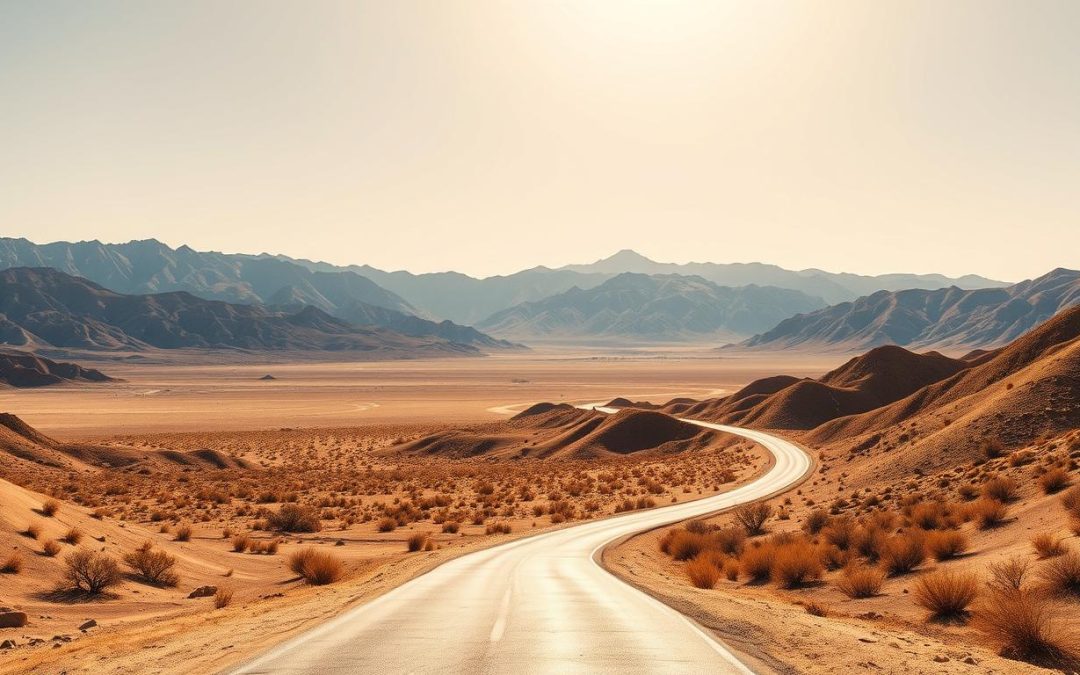Have you ever wondered how to plan a trip to a destination known for its extreme climate? One of the most iconic locations in the U.S. offers a unique blend of breathtaking landscapes and record-breaking temperatures. This place is not just a challenge for adventurers but also a paradise for those who know when to visit.
Known for its scorching heat and arid conditions, this area holds the world record for the highest temperature ever recorded. Yet, it’s also a place of stunning beauty, with vast deserts, rugged mountains, and unique wildlife. Timing your visit is crucial to make the most of your experience.
In this article, we’ll guide you through the best times to explore this remarkable destination. You’ll learn how to avoid the harshest weather and discover the seasons that offer the most pleasant conditions. Whether you’re planning a day trip or a longer stay, we’ll help you prepare for an unforgettable adventure.
Key Takeaways
- Plan your visit during cooler months for a more comfortable experience.
- Spring and fall offer mild temperatures ideal for outdoor activities.
- Winter months can also be a great time to explore, with cooler days.
- Prepare for extreme heat if visiting during summer months.
- Always bring plenty of water and sun protection, regardless of the season.
Understanding Death Valley’s Extreme Climate
Exploring a place with extreme weather requires understanding its unique climate patterns. This iconic destination is known for its scorching heat and minimal rainfall. The combination of clear, dry air and steep mountain walls creates relentless heat buildup.
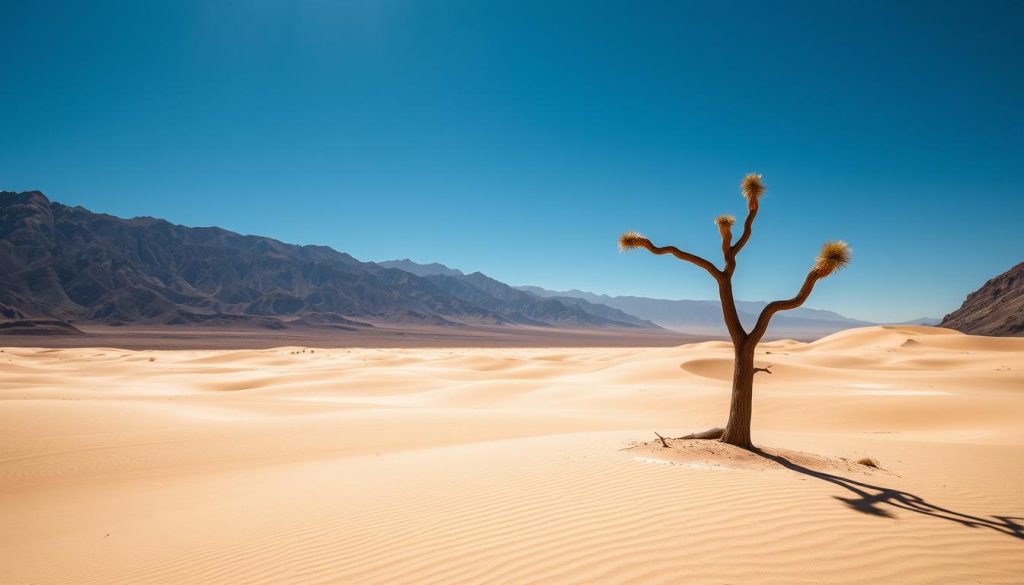
Desert Heat, Record Temperatures, and Humidity
Summer temperatures here often exceed 120°F, with the record heat reaching a staggering 135°F. Furnace Creek, a notable location, holds some of the highest recorded temperatures. Despite the intense daytime heat, nights can be surprisingly cool due to the desert’s low humidity.
Humidity levels remain low during summer but can increase slightly in winter. This shift makes winter nights feel colder, even though daytime temperatures are milder. The climate varies by elevation, time of day, and season, offering a range of experiences.
Rainshadow Effect and Minimal Precipitation
The rainshadow effect from surrounding mountains plays a significant role in the area’s dryness. Moisture-laden air from the Pacific Ocean is blocked by the Sierra Nevada, leaving this region with less than 2 inches of annual precipitation. This phenomenon contributes to the extreme desert conditions.
Despite the harsh climate, the area’s unique weather patterns create stunning landscapes. From vast salt flats to rugged mountains, the environment is as dramatic as its weather.
| Climate Feature | Details |
|---|---|
| Record High Temperature | 135°F (Furnace Creek) |
| Average Annual Precipitation | Less than 2 inches |
| Summer Humidity | Low |
| Winter Humidity | Moderate |
Understanding these climate extremes will help you plan your visit. Whether you’re exploring in spring, summer, or winter, knowing what to expect ensures a safer and more enjoyable trip.
Death Valley National Park, Nevada: Best Months for a Weather-Savvy Trip
Timing your visit to a desert destination can make all the difference in your experience. Understanding the seasonal shifts in weather helps you plan a trip that’s both safe and enjoyable. Let’s explore why spring, fall, and winter are the most favorable times to visit this iconic location.
Why Spring and Fall Offer Ideal Conditions
Spring and fall are widely regarded as the best seasons to explore this desert landscape. During these months, daytime temperatures range from 70°F to 90°F, making outdoor activities like hiking and sightseeing more comfortable. The dramatic shift from summer’s extreme heat to milder conditions is a welcome change for visitors.
Lower elevation areas, such as Badwater Basin, remain warm but manageable. Slightly elevated sites offer cooler temperatures, perfect for extended exploration. Spring also brings wildflower blooms, especially after a wet winter, adding vibrant colors to the arid environment.
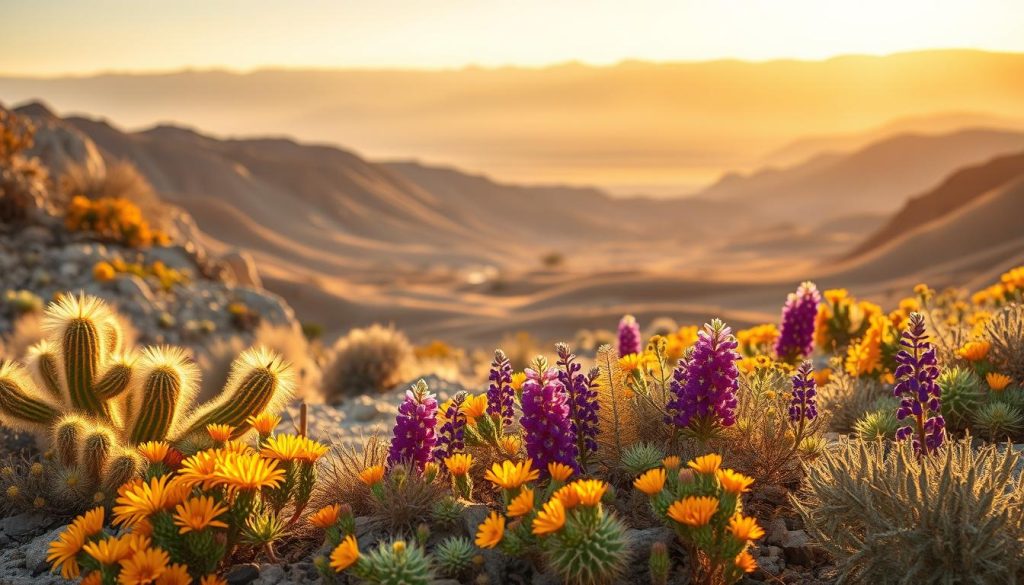
Compared to other desert regions in California, this place experiences a more pronounced seasonal variation. This makes spring and fall uniquely appealing for those seeking a balance between adventure and comfort.
The Comfort of Winter Days in the Desert
Winter is another excellent time to visit, with daytime temperatures averaging 60°F to 70°F. While nights can be chilly, dropping to around 30°F, the mild daytime weather is ideal for outdoor activities. Areas like Furnace Creek offer a pleasant base for exploring the park’s wonders.
Winter’s moderate humidity levels create a comfortable atmosphere, unlike the dry heat of summer. This season also sees fewer crowds compared to spring and fall, allowing for a more serene experience. Whether you’re hiking or simply enjoying the scenic views, winter provides a unique perspective on this desert landscape.
As you plan your trip, keep in mind that the weather can vary by elevation and time of day. Packing layers ensures you’re prepared for the cooler nights and warmer afternoons that define this time of year.
Planning Your Adventure: Essential Tips and Packing Advice
Preparing for a desert adventure requires careful planning and the right gear. Whether you’re exploring the vast landscapes of Badwater Basin or enjoying the scenic views in the north, packing smartly ensures a safe and enjoyable experience. Here’s what you need to know before you go.
Gear Up for Harsh Desert Conditions
Desert environments demand specific gear to handle extreme conditions. Start with sturdy, comfortable shoes designed for rocky terrain. A personal mister or cooling neck wrap can provide relief during hot afternoons. Don’t forget extra moisturizing products to combat the dry air.
Layered clothing is essential, even in winter. Temperatures can fluctuate dramatically between day and night. Pack lightweight, breathable fabrics for daytime and warmer layers for cooler evenings. A wide-brimmed hat and UV-protective sunglasses are must-haves for sun protection.
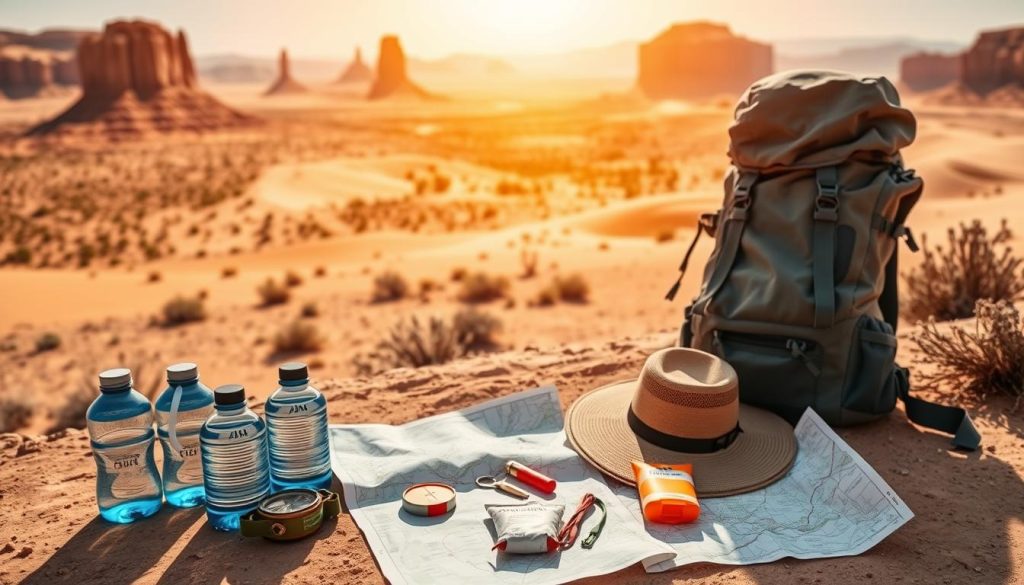
Hydration, Sun Protection, and Safety Precautions
Staying hydrated is critical in the desert. Carry a reusable water bottle or hydration pack, and aim to drink at least one gallon of water per day. Electrolyte supplements can help replenish lost minerals.
Sun protection is equally important. Use a high-SPF sunscreen and reapply it every two hours. Seek shade during peak sun hours, typically between 10 a.m. and 4 p.m. Always check the weather forecast before your trip to adjust your packing accordingly.
Safety precautions include informing someone of your itinerary and carrying a first-aid kit. If you’re staying at resort areas like Furnace Creek, note the dress codes. Some lodgings require “resort attire” for dining, so pack accordingly.
| Essential Item | Purpose |
|---|---|
| Sturdy Shoes | Protect feet on rocky terrain |
| Hydration Pack | Ensure constant water supply |
| Wide-Brimmed Hat | Shield from intense sun |
| Layered Clothing | Adapt to temperature changes |
By following these tips, you’ll be well-prepared for your desert adventure. Proper planning ensures you can focus on enjoying the stunning landscapes and unique experiences this destination offers.
Monthly Weather Breakdown and Seasonal Highlights
Each month brings unique weather conditions that shape your experience in this iconic spot. From scorching summer days to cool winter nights, understanding the monthly climate helps you plan your trip effectively. Let’s dive into the details to ensure you’re prepared for every season.
Temperature and Rainfall by Month
In summer, temperatures often soar above 120°F, making it the hottest time of the year. July and August are particularly intense, with average highs of 116°F. Rainfall is minimal, with less than 0.1 inches per month. These conditions make hydration and sun protection essential.
Spring and fall offer milder weather, with daytime temperatures ranging from 70°F to 90°F. March and April are ideal for outdoor activities, with average highs of 80°F. Rainfall remains low, but occasional showers can bring life to the desert. Winter sees cooler days, with highs around 60°F and lows dropping to 30°F at night.
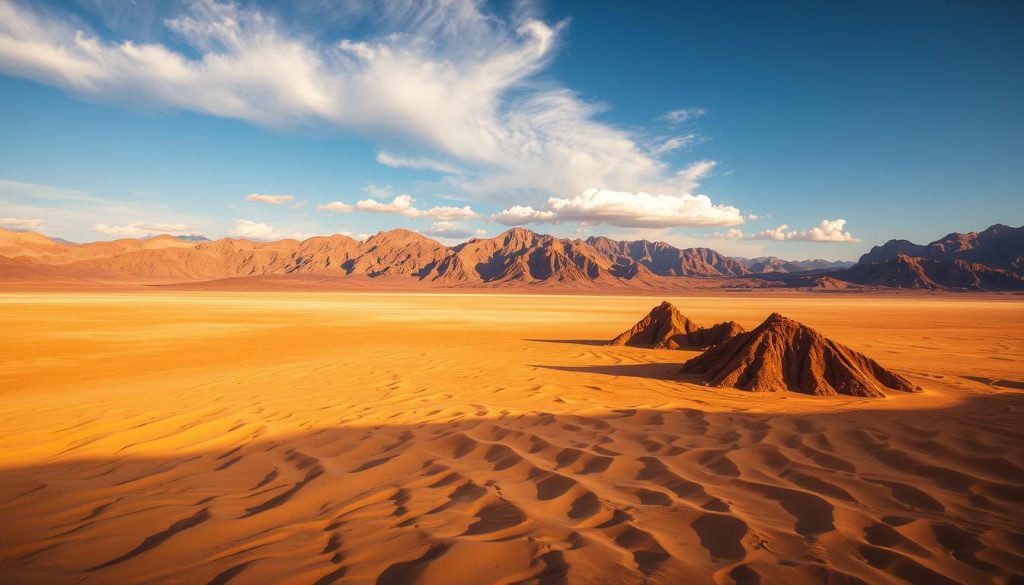
Wildflower Blooms and Scenic Transformations
Spring is a magical time in the desert, especially after a wet winter. Wildflower blooms transform the landscape into a vibrant tapestry of colors. Areas like Badwater Basin become a must-see spot for nature enthusiasts. This phenomenon is rare and depends on rainfall patterns, making it a special treat for visitors.
In contrast, summer brings a stark, arid beauty. The intense heat creates a surreal atmosphere, with shimmering mirages and vast salt flats. Winter offers a different perspective, with cooler temperatures and clear skies perfect for stargazing. Each season provides a unique way to experience this iconic location.
Compared to the overall state climate, this area stands out for its extreme conditions. While other regions in California experience milder weather, this spot remains a testament to nature’s extremes. Understanding these variations ensures you’re ready for an unforgettable adventure.
Visitor Seasons: Balancing Crowds and Budget
Planning a trip to a desert destination involves more than just packing your bags. Understanding the visitor seasons can help you balance crowds and budget while ensuring a safe and enjoyable experience. Let’s explore the peak, shoulder, and off-peak seasons to help you make the most of your adventure.
Peak, Shoulder, and Off-Peak Insights
Visitor numbers fluctuate throughout the year, with each season offering unique advantages. Peak season, typically in spring and fall, attracts the most visitors due to mild temperatures and ideal conditions for outdoor activities. However, this also means higher lodging costs and more crowded trails.
Shoulder season, which includes late fall and early spring, offers a balance between pleasant weather and fewer crowds. This is a great time to enjoy the desert’s beauty without the hustle and bustle of peak season. Lodging prices are often more reasonable, making it a budget-friendly option.
Off-peak season, during the summer months, sees fewer visitors due to extreme heat. While lodging costs may be lower, the physical risks are higher. It’s essential to stay hydrated and avoid outdoor activities during the hottest parts of the day. Monitoring weather conditions is crucial, as sudden flash floods can occur during rare but intense rainstorms.
Budget-friendly travel tips include planning your trip during shoulder season and booking accommodations in advance. Always check the weather forecast and be prepared for sudden changes in conditions. Balancing modern conveniences, like air conditioning, with the authentic experience of desert conditions can enhance your trip.
Changes in elevation and weather conditions can significantly impact your safety and enjoyment. Higher elevations offer cooler temperatures, while lower areas can be much hotter. Always carry plenty of water and sun protection, regardless of the season. By understanding these factors, you can plan a trip that’s both memorable and safe.
Hidden Gems and Must-See Sights in Death Valley
Discovering the hidden treasures of a desert landscape can transform your adventure into an unforgettable journey. From iconic landmarks to lesser-known spots, this area offers a mix of dramatic beauty and unique experiences. Whether you’re a hiker, photographer, or simply a curious traveler, there’s something here for every person.
Iconic Landmarks: Badwater Basin and Zabriskie Point
Badwater Basin is one of the most famous sights in America. At 282 feet below sea level, it’s the lowest point in North America. The vast salt flats create a surreal, otherworldly landscape perfect for photography. Early morning or late afternoon visits offer the best lighting, with shadows adding depth to your shots.
Zabriskie Point is another must-see. This viewpoint offers panoramic views of colorful, eroded hills. The interplay of sunlight and shade creates dynamic visuals that change throughout the day. It’s a favorite spot for both sunrise and sunset, making it ideal for photographers and nature lovers alike.
Exploring Hidden Gems
Beyond the iconic landmarks, there are lesser-known spots that offer a quieter, more intimate experience. The Artist’s Palette, with its vibrant mineral-stained hills, is a hidden gem worth exploring. The Golden Canyon trail is another great option, offering stunning views without the crowds.
For those looking to stay off the beaten path, the Mesquite Flat Sand Dunes provide a serene escape. These dunes are perfect for hiking or simply enjoying the peaceful desert atmosphere. Remember to bring plenty of water and sun protection, as the floor of the valley can be harsh during the day.
Tips for a Memorable Visit
- Visit early in the morning or late in the afternoon for the best lighting and cooler temperatures.
- Bring a wide-brimmed hat, sunscreen, and plenty of water to stay comfortable.
- Wear sturdy shoes for hiking on rocky or uneven terrain.
- Take breaks in shaded areas to avoid overheating during your exploration.
By exploring both iconic landmarks and hidden gems, you’ll gain a deeper appreciation for this unique desert landscape. Whether you’re capturing photos or simply soaking in the views, these sights promise an unforgettable experience.
Conclusion
Understanding the climate is key to making the most of your desert adventure. Planning your visit during spring, fall, or select winter days ensures milder conditions and a safer experience. These seasons offer ideal temperatures for exploring iconic spots like Zabriskie Point and Badwater Basin.
Packing smartly is essential. Bring layers, plenty of water, and sun protection to handle the desert’s extremes. Budgeting your trip during shoulder seasons can also save money while avoiding crowds.
By using this guide, you can decide the best time to visit Death Valley and enjoy its unique beauty. Plan wisely, and your adventure will be unforgettable.
The above is subject to change.
Check back often to TRAVEL.COM for the latest travel tips and deals.
Here are some Tours & Sightseeing suggestions that might pique your interests!
